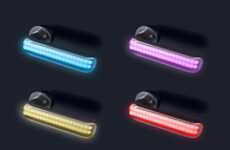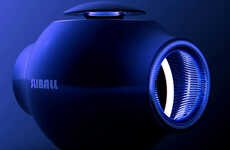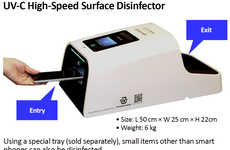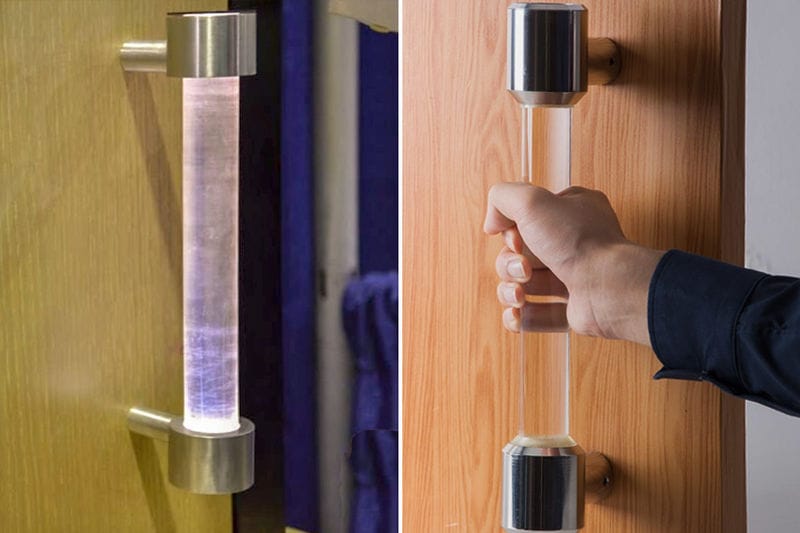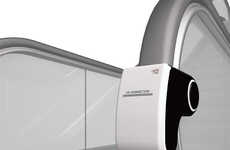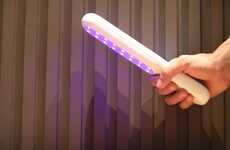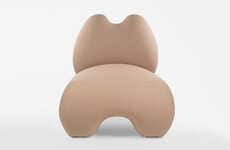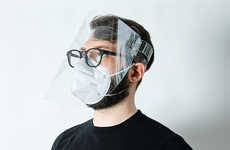
This Door Handle Uses UV Light and Reflective Material to Kill Germs
Michael Hemsworth — April 20, 2020 — Lifestyle
References: yankodesign
Cleaning commonly touched surfaces like door handles is essential but still something of a hassle, which is something this self-sanitizing door handle aims to change.
The handle is achieved with a glass tube that's accented by aluminum caps at the top and bottom that hide UV light technology. The portion of the handle that users come into contact with is covered in a powdered photocatalytic coating that's sourced from titanium dioxide. Once the light is activated, the handle is capable of destroying 99.8% of the bacteria and germs that could be lingering on the surface, while the kinetic design draws energy from the door's motion to eliminate the need for an additional power source.
The self-sanitizing door handle is the design work of Sum Ming Wong and Kin Pong Li, and is the winner of the 2019 James Dyson Award.
The handle is achieved with a glass tube that's accented by aluminum caps at the top and bottom that hide UV light technology. The portion of the handle that users come into contact with is covered in a powdered photocatalytic coating that's sourced from titanium dioxide. Once the light is activated, the handle is capable of destroying 99.8% of the bacteria and germs that could be lingering on the surface, while the kinetic design draws energy from the door's motion to eliminate the need for an additional power source.
The self-sanitizing door handle is the design work of Sum Ming Wong and Kin Pong Li, and is the winner of the 2019 James Dyson Award.
Trend Themes
1. Self-sanitizing Surfaces - Similar UV light technology and photocatalytic coating can be adapted to other surfaces, creating new opportunities for self-sanitizing products.
2. Motion-powered Devices - The kinetic design of the self-sanitizing door handle draws energy from motion to eliminate the need for an additional power source, offering new possibilities for energy-efficient devices.
3. Germ-killing Technology - The increasing demand for germ-killing technology is driving the development of new products, creating opportunities for innovation in the healthcare and cleaning industries.
Industry Implications
1. Healthcare - Self-sanitizing surfaces and germ-killing technology have the potential to improve infection control and reduce the spread of disease in healthcare settings.
2. Cleaning - Self-sanitizing products and technologies are disrupting traditional cleaning methods, offering more efficient and effective solutions for maintaining clean and hygienic environments.
3. Architecture and Design - As the design of buildings and public spaces becomes more focused on health and safety, self-sanitizing surfaces and devices offer new opportunities for integrating germ-killing technology into the built environment.
6.8
Score
Popularity
Activity
Freshness

